Ford Puma vs Toyota Corolla – Hvilken bil passer bedst til dig?
Uanset om det gælder hverdag, familie eller lange ture – her ser du forskellene.
Find ud af, om Ford Puma eller Toyota Corolla passer bedst til din livsstil.
In the ever-evolving automotive landscape, two contenders have emerged as popular choices among consumers: the Ford Puma and the Toyota Corolla. Despite their differences in body style and engineering philosophy, both vehicles deliver impressive performance and innovative features. In this article, we will compare the Ford Puma, a sleek compact SUV, with the Toyota Corolla, a reliable hatchback, exploring their technical specifications and innovative aspects.
Design and Body Type
The Ford Puma is designed as a compact SUV, offering a raised stance that provides better visibility and a sense of authority on the road. Its sporty silhouette is accentuated by sharp lines and a modern grille, appealing to buyers who prefer a stylish yet practical vehicle. The Puma measures 4186 mm in length, 1805 mm in width, and stands at a height of 1550 mm, making it a versatile choice for both city driving and outdoor adventures.
On the other hand, the Toyota Corolla stands as a classic hatchback, embodying a more traditional design ethos. With its length of 4370 mm, width of 1790 mm, and a height of 1435 mm, the Corolla delivers a compact footprint that's perfect for urban environments. The hatchback layout emphasizes practicality, offering ample cargo space while retaining a sporty look.
Engine and Performance
When it comes to engines, the Ford Puma offers a range of options, including petrol mild-hybrid (MHEV) and electric variants. The Puma is equipped with a 1.0L three-cylinder engine that produces power outputs ranging from 125 HP to 168 HP, depending on the configuration. Fuel consumption variants stand at approximately 5.4 to 6.0 L/100 km, while the electric range reaches up to 376 km, showcasing its versatility for both petrol and electric drivers.
In contrast, the Toyota Corolla employs a highly efficient full hybrid system, featuring either a 1.8L or 2.0L four-cylinder engine delivering between 140 HP and 196 HP. With consumption as low as 4.4 L/100 km and CO2 emissions of just 100 g/km, the Corolla stands out for its eco-friendly approach. Acceleration times are competitive, reaching 0 to 100 km/h in as little as 7.5 seconds.
Driving Experience and Handling
Ford’s Puma is designed with an emphasis on fun-to-drive characteristics. Its front-wheel-drive setup, combined with responsive steering and agile handling, makes it an engaging choice for drivers who appreciate a sporty ride. The available dual-clutch automatic transmission enhances performance, ensuring smooth gear transitions regardless of the conditions.
On the other hand, the Corolla has built its reputation on reliability and ride comfort. The adaptation of a Continuously Variable Transmission (CVT) contributes to a seamless driving experience, although some may argue it lacks the engagement found in traditional gearboxes. The Corolla’s emphasis on comfort and stability over sportiness makes it an excellent commuter vehicle.
Interior and Technological Innovativeness
Inside the Ford Puma, the cabin is characterized by a modern aesthetic with high-quality materials and an intuitive infotainment system. The vehicle is equipped with Ford’s latest SYNC 3 technology, enabling smartphone integration and advanced connectivity options. Additionally, a notable feature is the available 456 to 523 liters of trunk space, making it highly practical for families or road trips.
The Toyota Corolla, while simpler in its design, doesn’t sacrifice quality. It integrates Toyota’s latest multimedia system, offering compatibility with Apple CarPlay and Android Auto. The Corolla features a well-structured interior with comfortable seating and a cargo space ranging from 313 to 361 liters. Although more straightforward, the Corolla’s tech remains user-friendly and practical.
Safety and Reliability
Both vehicles are equipped with robust safety features. The Ford Puma comes with a suite of advanced driver-assistance systems (ADAS), including adaptive cruise control and lane-keeping assist, contributing to its high safety ratings. Ford's reputation for reliability is also supported by a variety of warranties and service plans tailored to customers’ needs.
Similarly, the Toyota Corolla is renowned for its safety prowess, earning high ratings in crash tests and incorporating Toyota Safety Sense technology as standard. This includes pre-collision systems, adaptive cruise control, and lane departure alerts, positioning it as a safe choice for drivers concerned about safety.
Conclusion
In the showdown between the Ford Puma and Toyota Corolla, both vehicles shine in their respective categories. The Puma appeals to those seeking a versatile and sporty compact SUV with a good blend of petrol and electric options. Meanwhile, the Corolla stands as a environmentally-conscious choice that emphasizes efficiency, reliability, and comfort.
Ultimately, the decision comes down to personal preference: whether you desire the sporty ride of the Puma or the eco-friendly reliability of the Corolla, you can’t go wrong with either choice.
Her bliver det konkret: De tekniske forskelle i detaljer
Omkostninger og forbrug: Pris og effektivitet hører til de vigtigste faktorer – og her viser forskellene sig ofte tydeligt.
Ford Puma har en i mindre grad fordel i prisen – den starter allerede ved 226500 dkr, mens Toyota Corolla koster 261300 dkr. Forskellen er omkring 34792 dkr.
Der ses også forskel i brændstofforbruget: Toyota Corolla nøjes med 4.40 L og er dermed klart synlig mere økonomisk end Ford Puma, der bruger 5.40 L. Forskellen er omkring 1 L pr. 100 km.
Motor og ydeevne: Effekt, drejningsmoment og acceleration er de klassiske mål for bilentusiaster – og her træder forskellene tydeligt frem.
Når det gælder motorkraft, har Toyota Corolla en let fordel – 178 HK mod 168 HK. Det svarer til en forskel på cirka 10 HK hk.
I acceleration fra 0 til 100 km/t er Ford Puma let hurtigere – 7.40 s mod 7.50 s. Det er cirka 0.10 s hurtigere.
I tophastighed ligger Ford Puma en smule foran – den når 210 km/h, mens Toyota Corolla topper ved 180 km/h. Forskellen er cirka 30 km/h.
Plads og praktiske egenskaber: Kabineplads, bagagerum og lasteevne er afgørende i daglig brug. Her tæller komfort og fleksibilitet mest.
Begge biler har plads til 5 personer.
Hvad egenvægt angår, er Ford Puma let lettere – 1316 kg mod 1420 kg. Forskellen er cirka 104 kg.
Når det kommer til bagagerumsplads, tilbyder Ford Puma tydelig mere – 523 L mod 361 L. Forskellen er omkring 162 L.
I maksimal lastekapacitet klarer Ford Puma sig i mindre grad bedre – op til 1283 L, cirka 231 L mere end Toyota Corolla.
Også i lasteevne vinder Ford Puma let – 469 kg mod 450 kg. Forskellen er omkring 19 kg.
Vores konklusion: Toyota Corolla viser sig at være har kun en lille fordel og bliver dermed vores DriveDuel Champion!
I denne sammenligning er Toyota Corolla den mere komplette allrounder.
Ford Puma
Den nye Ford Puma imponerer med sit stilfulde design og alsidige interiør, som gør den til et ideelt valg for både bykørsel og længere ture. Med en kombination af komfort og rummelighed formår Puma at levere en behagelig køreoplevelse for hele familien. Desuden tilbyder bilen avancerede sikkerhedsfunktioner, der sikrer tryghed på vejen.
Detaljer @ puma.fordpresskits.com
@ puma.fordpresskits.com
 @ puma.fordpresskits.com
@ puma.fordpresskits.com
 @ puma.fordpresskits.com
@ puma.fordpresskits.com
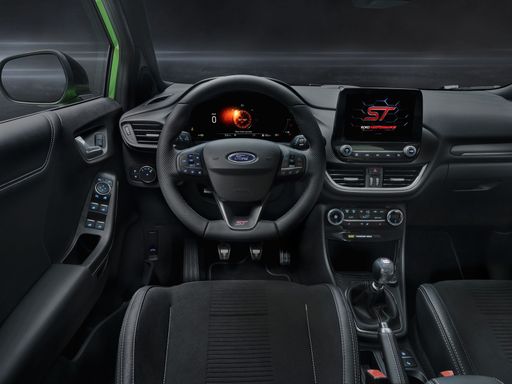 @ puma.fordpresskits.com
@ puma.fordpresskits.com
Toyota Corolla
Toyota Corolla er kendt for sin pålidelighed og komfort, hvilket gør den til et populært valg blandt bilkøbere. Det tidløse design kombineret med en effektiv brændstoføkonomi appellerer til både unge og erfarne bilister. Med de nyeste opdateringer tilbyder Corolla et behageligt og moderne interiør, der tager kørselsoplevelsen til nye højder.
Detaljer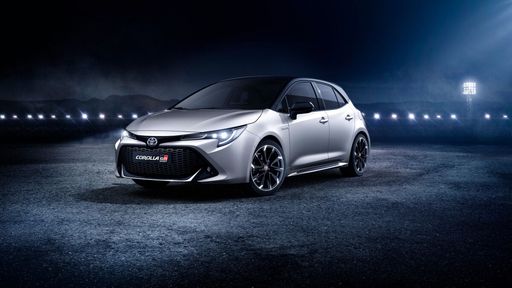 @ Toyota
@ Toyota
 @ Toyota
@ Toyota
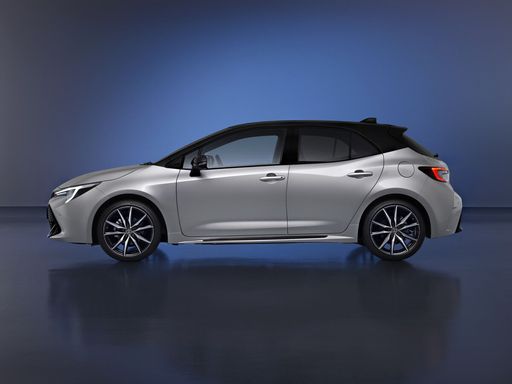 @ Toyota
@ Toyota
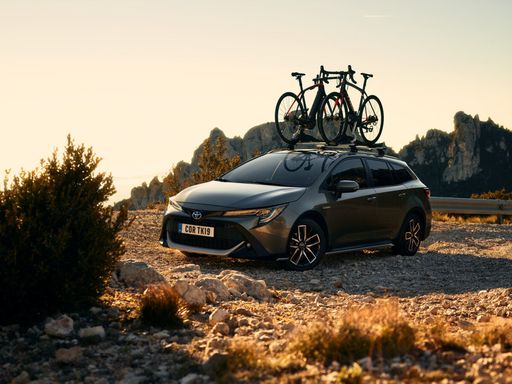 @ Toyota
@ Toyota
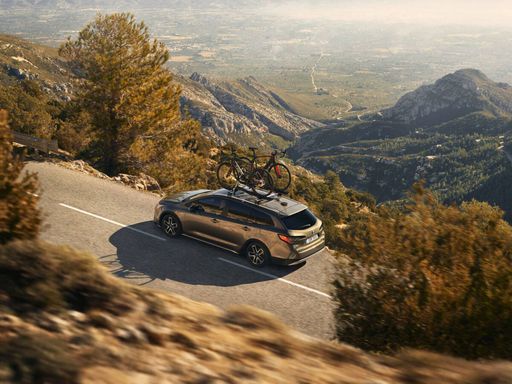 @ Toyota
@ Toyota

|

|
|
|
|
Omkostninger og forbrug |
|
|---|---|
|
Pris
226500 - 332300 dkr
|
Pris
261300 - 319200 dkr
|
|
Forbrug L/100km
5.4 - 5.9 L
|
Forbrug L/100km
4.40 L
|
|
Forbrug kWh/100km
13.1 - 13.9 kWh
|
Forbrug kWh/100km
-
|
|
Elektrisk rækkevidde
361 - 376 km
|
Elektrisk rækkevidde
-
|
|
Batterikapacitet
43 kWh
|
Batterikapacitet
-
|
|
co2
0 - 135 g/km
|
co2
100 g/km
|
|
Tankkapacitet
42 L
|
Tankkapacitet
43 L
|
Dimensioner og karrosseri |
|
|---|---|
|
Karrosseri
SUV
|
Karrosseri
Hatchback
|
|
Sæder
5
|
Sæder
5
|
|
Døre
5
|
Døre
5
|
|
Egenvægt
1316 - 1563 kg
|
Egenvægt
1420 - 1460 kg
|
|
Bagagerumskapacitet
456 - 523 L
|
Bagagerumskapacitet
313 - 361 L
|
|
Længde
4186 - 4226 mm
|
Længde
4370 mm
|
|
Bredde
1805 mm
|
Bredde
1790 mm
|
|
Højde
1550 - 1555 mm
|
Højde
1435 mm
|
|
Maksimal bagagerumskapacitet
1216 - 1283 L
|
Maksimal bagagerumskapacitet
1004 - 1052 L
|
|
Lastkapacitet
367 - 469 kg
|
Lastkapacitet
400 - 450 kg
|
Motor og ydeevne |
|
|---|---|
|
Motortype
Elektrisk, Benzin mild-hybrid
|
Motortype
Fuld hybrid
|
|
Transmission
Automatisk, Manuel
|
Transmission
Automatisk
|
|
Transmissionsdetaljer
Reduktionsgear, Manuel gearkasse, Automatisk dobbeltkobling
|
Transmissionsdetaljer
CVT
|
|
Drivtype
Forhjulstræk
|
Drivtype
Forhjulstræk
|
|
Effekt HK
125 - 168 HK
|
Effekt HK
140 - 178 HK
|
|
Acceleration 0-100 km/t
7.4 - 9.8 s
|
Acceleration 0-100 km/t
7.5 - 9.2 s
|
|
Maks. hastighed
160 - 210 km/h
|
Maks. hastighed
180 km/h
|
|
Moment
170 - 290 Nm
|
Moment
-
|
|
Antal cylindre
3
|
Antal cylindre
4
|
|
Effekt kW
92 - 124 kW
|
Effekt kW
103 - 131 kW
|
|
Motorstørrelse
999 cm3
|
Motorstørrelse
1798 - 1987 cm3
|
Generelt |
|
|---|---|
|
Modelår
2025
|
Modelår
2025
|
|
CO2-effektivitetsklasse
A, D
|
CO2-effektivitetsklasse
C
|
|
Mærke
Ford
|
Mærke
Toyota
|
Er Ford Puma tilgængelig med forskellige drivtyper?
Modellen tilbydes med Forhjulstræk.
De viste priser og data er estimater baseret på tyske listepriser og kan variere fra land til land. Disse oplysninger er ikke juridisk bindende.
